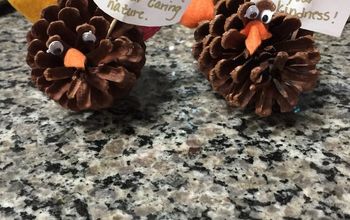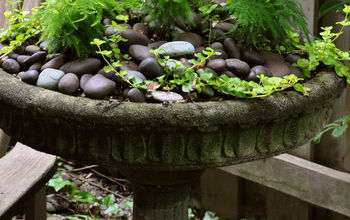Frugally Update Your Floors With Linoleum Flooring and Painting

If you are interested in linoleum floors, this post will help you learn everything you need to know about how to install linoleum flooring. First, we will discuss the pros and cons of linoleum flooring as well as cheap linoleum flooring. Then, you will find out about different options and installation for linoleum flooring rolls, linoleum wood flooring, linoleum tiles.
Pros and Cons of Linoleum Flooring
Linoleum flooring is popular among homes as well as commercial spaces since it is a long lasting floor that can handle heavy wear. In addition, there are lots of options and varieties of linoleum different colors, patterns with wood looking linoleum, and linoleum tiles.
Compared to other flooring options such as wood floors and tile, linoleum flooring is a budget-friendly option. Cheap linoleum flooring can look and feel like wood or tile without the added price.
When considering linoleum flooring, one thing to keep in mind is that it is susceptible to water damage and damage to cleaning products if not sealed initially and periodically. According to Armstrong Flooring, if not maintained, the floor can lose its water resistance and start to curl at the edges. Because of this, linoleum flooring is not recommended in areas with high moisture and humidity such as bathrooms and laundry rooms.
However, kitchen linoleum flooring and linoleum in other heavy traffic areas would be a wise choice in both homes and commercial properties due to its durability and low price range compared to other flooring options.
Linoleum Flooring Options
Linoleum is available in glue-down sheets as well as snap-together tiles. You can buy inexpensive linoleum flooring rolls at local hardware stores or online. Even Amazon sells linoleum flooring. You can buy rolls in different patterns and colors that can be cut to fit your space and design needs. Standard linoleum flooring rolls come in six to seven-foot widths. You can expect to spend around $4 per square foot for sheet linoleum flooring. As another option, there are linoleum tiles that cost a little more per square foot.
Prepare Your Floor
Before you install new linoleum flooring, be sure to thoroughly remove all of your old floorings. If you have carpet to remove, then follow the steps this Hometalker used. First, she cut the carpet and padding into smaller pieces to ensure they would fit in garbage bags. Then, after ripping and pulling up the carpet and padding, she removed tack strips and patched the holes. Lastly, she sanded the patched holes and scraped off any paint buildup with hot water.
See post: Amanda|Carpet and Linoleum to Faux Wood Floor
For tile removal, this Hometalker used a wedge and a hammer. Then, she used a sander in spots that that still needed to be flattened.
If you already have linoleum and want to replace it, then you’re in luck. This Hometalker said it was a breeze to remove linoleum. The first step is to remove staples holding the layers together, then just use floor scrapers to remove the linoleum in large chunks.
Once you remove your old flooring, you need to clean the bare floors before you install linoleum flooring.
To clean bare floors, this Hometalker removed any leftover glue residue by spraying the floor with water, letting it soak for 10 minutes, and then using a sanding block to remove the residue. For removing carpet glue, a belt sander works well.
The last step in preparing your floors for new flooring is to wipe down your floor with a water and degreaser solution.
How to Install Linoleum Flooring
Once your floor is bare and clean, you are ready to start the linoleum flooring installation.
According to DIYNetwork, the first thing you will need to do is acclimate your flooring. To do this, adjust your room temperature to at least 68 degrees Fahrenheit for 24 hours before installation.
For Installation of Linoleum Tiles
First, find the center point of the room and make a mark on the floor. Then with chalk, draw perpendicular lines that bisect each wall, meeting at that center mark on the floor. This is your starting point. Place the first linoleum tile by aligning each corner on a chalk line. Then, you can place a few more tiles down around it to plan the pattern that you want.
How to Glue Linoleum Floors
Now, you will need your adhesive. According to Hunker, you have many options to choose from including cellulose glue, rye flour paste, natural rubber glue, natural resin glue, generic “linoleum adhesive” glue, wood glue, acrylate glue, and EVA glue.
DIY Network recommends you use a 1/16” notched trowel to spread a small amount of adhesive on the floor where you will place the tile. Then, lay the tile down in that spot. Continue the process until you get close to the wall. At this point, you may need to cut some of the tiles using a carpenter's square and utility knife.
When you are done placing all of the tiles, you can nail down the baseboards. DIY Network also suggests using a heavy roller to roll over the tiles before the adhesive dries.
How to Install Sheet Linoleum Flooring
On a clean, bare floor, unroll the sheet of linoleum flooring. Roll out the sheet linoleum flooring until it is tight against the wall and cut it to the right size. In this video, watch how she rolls out the linoleum, cuts it, and attaches it to the floor. There are also instructions for cutting around toilets and other obstacles. As a finishing touch, she applies a silicone seal.
Can you paint linoleum floors?
If you do not want to replace your linoleum floors but are still looking for a change, consider painting linoleum floors. This Hometalker was tired of her ugly linoleum floors. In order to save money, she decided to paint linoleum in order to make it look better until she was ready to replace it. On standard builder grade linoleum sheet flooring, she first applied a coat of a good high adhesion primer. Then, she added two coats of Glidden Porch and Floor. After that, she used stencils to decorate the floors. Finally, the Hometalker recommends using two coats of water-based ply to protect the floors.
Even though it was a tedious process, she thought it was definitely worth it. Look at her before and after pictures.
See post: Shavonda @ AHomeFullofColor|DIY Painted and Stenciled Linoleum Floor
This Hometalker also stenciled and painted linoleum floors. Using DecoArt's Chalk Paint in Everlasting & Relic, she gave her linoleum floors a major upgrade without spending a lot of money. Watch the video to see how she did it and check out the before and after pictures.
See post: Susana | Livin’ The Life of Riley|So I Painted Our Ugly Linoleum....
Best Way to Clean Linoleum Floors
Now that you have either new linoleum floors or newly painted linoleum, you will want to keep it clean. According to MollyMaid, every day, you should use a dry, microfiber mop to remove dust and debris in high traffic areas. Then, weekly, use a vacuum cleaner attachment or soft bristled broom. For deeper cleaning, mop the floor with a mixture of one gallon of hot water to one cup of vinegar with a few drops of dish soap.
Have you installed new linoleum flooring or painted on existing linoleum? Please share your before and after pictures as well as any tips you might have for others.
Written for the Hometalk community by: Rachel Belkin | Cha Ching Queen

































Frequently asked questions
Have a question about this project?